by Charles Lear
Starting in the 1960’s, UFOs began to interact with witnesses in a most unpleasant manner. In part one of this series, we looked at cases where people were injured by UFOs, specifically by being burned. One case involved an eight-year-old boy in Hobbs, New Mexico in 1964. This week we’ll look at another episode from 1968 that has a lot of similarities. Two other cases will be examined as well. One comes from New York, and the other is a famous case from Canada. All are unexplained and may make one think twice before approaching anything unusual floating in the sky.
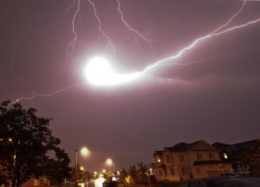 The first case comes from a report in the May-June 1966 APRO Bulletin. On April 24, 1966, in Fleming, New York, 45-year-old Viola Smartwood was in the passenger seat, riding in a car with her husband. A glowing ball appeared out of the rain and hovered close by. They heard a “loud snap,” and a shock went through Mrs. Smartwood’s right side. She was paralyzed on that side and was taken to the hospital where she slowly regained motor control. As it was raining, ball lightning seems like a plausible explanation. The trouble is, it has not been scientifically confirmed that ball lightning actually exists, despite hundreds of years of reports.
The first case comes from a report in the May-June 1966 APRO Bulletin. On April 24, 1966, in Fleming, New York, 45-year-old Viola Smartwood was in the passenger seat, riding in a car with her husband. A glowing ball appeared out of the rain and hovered close by. They heard a “loud snap,” and a shock went through Mrs. Smartwood’s right side. She was paralyzed on that side and was taken to the hospital where she slowly regained motor control. As it was raining, ball lightning seems like a plausible explanation. The trouble is, it has not been scientifically confirmed that ball lightning actually exists, despite hundreds of years of reports.
Next up is a well-covered classic, but it’s interesting to consider it within this larger context. On May 20, 1967, a celebrated incident occurred near Falcon Lake in Manitoba, Canada. Stefan Michalak was an amateur geologist and was prospecting in the area when he sighted two disc-shaped craft descending in the southwest. He described them as looking like they had been milled out of a solid piece of steel. As he watched, one of the discs stopped and hovered 15 feet above him. The other one ascended and moved away towards the southwest changing colors from red to orange to grey until it disappeared from sight. In the meantime, the remaining object landed about 160 feet away from him and was also changing colors from red to iridescent steel. Michalek got out a pad of paper and sketched the object while looking at it for nearly 30 minutes. He described it as being 40 feet in diameter and 10 feet thick.
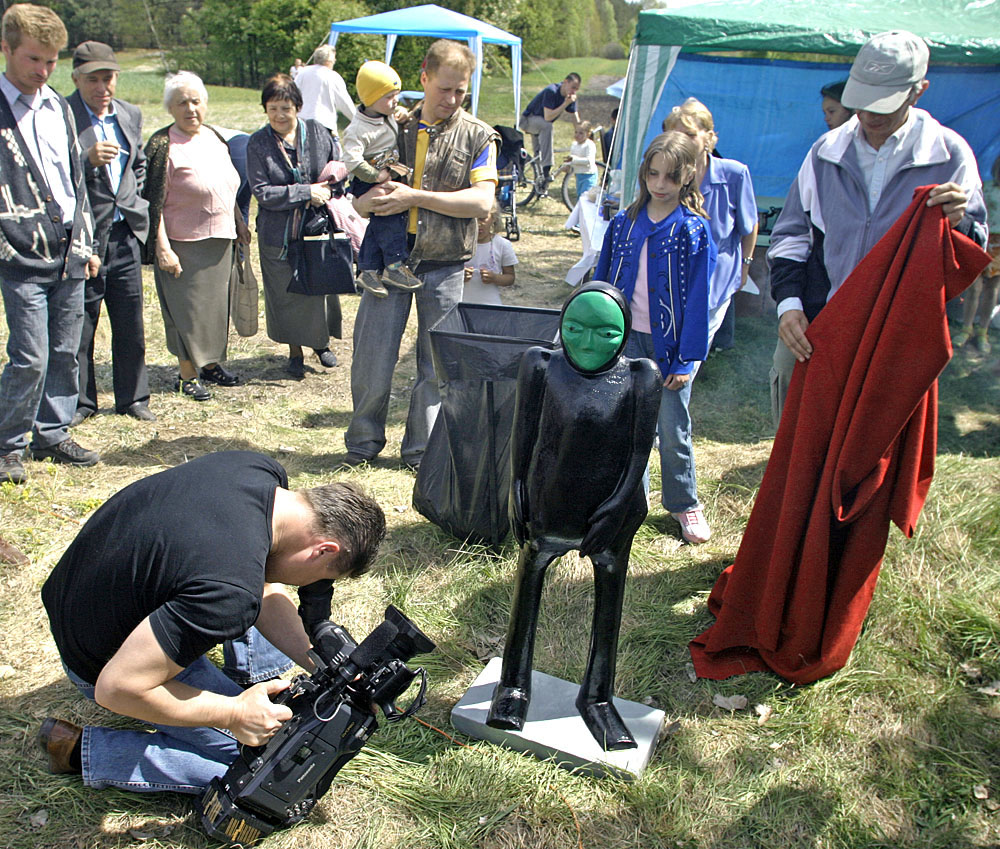
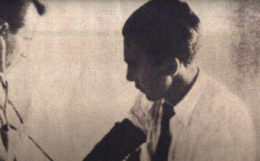 Starting in 1947, UFOs seemed to be engaging humanity in a step-by-step process. In the first few years, only the UFOs were reported. Then, there were accounts of occupants showing themselves during what has become known as the 1954 French Wave. An intimate encounter was described by Brazilian farmer,
Starting in 1947, UFOs seemed to be engaging humanity in a step-by-step process. In the first few years, only the UFOs were reported. Then, there were accounts of occupants showing themselves during what has become known as the 1954 French Wave. An intimate encounter was described by Brazilian farmer, 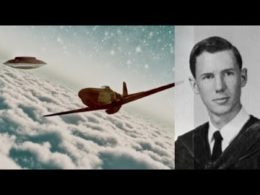 There is a classic Project Blue Book case known as,
There is a classic Project Blue Book case known as, 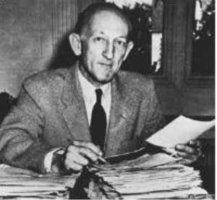 In 1961, Maj. Donald E. Keyhoe, USMC (Ret.) was the director of the National Investigations Committee on Aerial Phenomena. That year, he and his organization were making life difficult for the Air Force with criticism of their UFO investigation, Project Blue Book. This was nothing new, but now they were close to getting open hearings in Congress to address their criticisms.
In 1961, Maj. Donald E. Keyhoe, USMC (Ret.) was the director of the National Investigations Committee on Aerial Phenomena. That year, he and his organization were making life difficult for the Air Force with criticism of their UFO investigation, Project Blue Book. This was nothing new, but now they were close to getting open hearings in Congress to address their criticisms.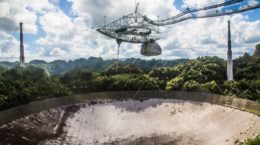 It was recently announced that the radio telescope in Arecibo, Puerto Rico, the world’s largest until 2016, is beyond repair and will be demolished. It is an icon of modern astronomy on par with the Very Large Array (seen in the movie “Contact”) located in New Mexico, and the news has stirred an emotional response among many. For UFOlogists, the Arecibo telescope holds a special significance. It was from this telescope on November 16, 1974, that the first, scientist approved message intended for extraterrestrial intelligence was sent. It consists of a series of binary numbers that code for a graphic giving basic information about the chemistry of life on earth, human DNA, human form, and the telescope itself. The message was designed by Cornell astronomy professor Dr. Frank Drake, with input from others including Dr. Carl Sagan. If anyone ever responds, there are many out there listening, from radio astronomers to those specifically searching for extraterrestrial intelligence. But, there are those who believe the call has already been returned.
It was recently announced that the radio telescope in Arecibo, Puerto Rico, the world’s largest until 2016, is beyond repair and will be demolished. It is an icon of modern astronomy on par with the Very Large Array (seen in the movie “Contact”) located in New Mexico, and the news has stirred an emotional response among many. For UFOlogists, the Arecibo telescope holds a special significance. It was from this telescope on November 16, 1974, that the first, scientist approved message intended for extraterrestrial intelligence was sent. It consists of a series of binary numbers that code for a graphic giving basic information about the chemistry of life on earth, human DNA, human form, and the telescope itself. The message was designed by Cornell astronomy professor Dr. Frank Drake, with input from others including Dr. Carl Sagan. If anyone ever responds, there are many out there listening, from radio astronomers to those specifically searching for extraterrestrial intelligence. But, there are those who believe the call has already been returned.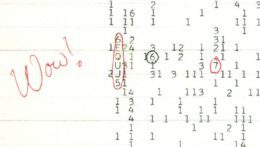 On Aug. 15, 1977, a strong intermittent signal was picked up by the Big Ear telescope in Delaware, Ohio. It lasted for 72 seconds and stood out in sharp contrast to the background noise. The signal was powerful and unusual and prompted astronomer Jerry Ehman to write “Wow!” next to the signal on a printout. The team focused on the area of the signal’s origin, but it never returned. Observatory Director John Krauss wrote to Carl Sagan that the “signal is highly suggestive of extraterrestrial intelligent origin, but little more can be said until it returns for further study.”
On Aug. 15, 1977, a strong intermittent signal was picked up by the Big Ear telescope in Delaware, Ohio. It lasted for 72 seconds and stood out in sharp contrast to the background noise. The signal was powerful and unusual and prompted astronomer Jerry Ehman to write “Wow!” next to the signal on a printout. The team focused on the area of the signal’s origin, but it never returned. Observatory Director John Krauss wrote to Carl Sagan that the “signal is highly suggestive of extraterrestrial intelligent origin, but little more can be said until it returns for further study.”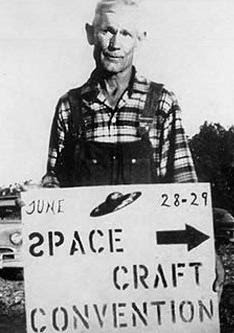 The year 1957 was a very interesting one in UFO history. In that year, UFO occupant reports were accepted as worthy of investigation by serious organizations such as the Aerial Phenomena Research Organization and Civilian Saucer Intelligence of New York; Contactees were in the spotlight thanks to the
The year 1957 was a very interesting one in UFO history. In that year, UFO occupant reports were accepted as worthy of investigation by serious organizations such as the Aerial Phenomena Research Organization and Civilian Saucer Intelligence of New York; Contactees were in the spotlight thanks to the 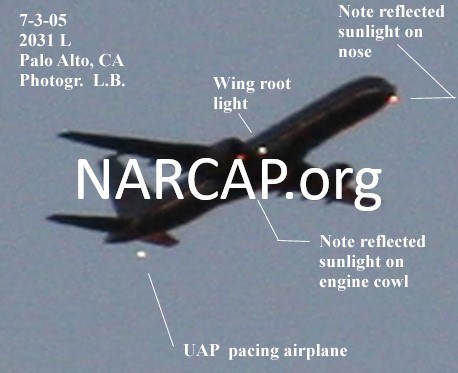 Because the F stands for “flying” in the acronym UFO, it stands to reason that pilots should frequently be UFO witnesses. They certainly are and there is even a specialized reporting center just for them. The National Aviation Reporting Center on Anomalous Phenomena was founded in 1999 by Dr. Richard M. Haines. The organization is dedicated to the study of Unidentified Aerial Phenomena and their effects on aviation safety. By the way, Dr. Haines finds the UFO designation for the phenomena so distasteful, he refuses to appear on Podcast UFO. Most pilots prefer to remain anonymous, as publicly admitting to seeing a flying saucer is not usually an enhancement to their careers.
Because the F stands for “flying” in the acronym UFO, it stands to reason that pilots should frequently be UFO witnesses. They certainly are and there is even a specialized reporting center just for them. The National Aviation Reporting Center on Anomalous Phenomena was founded in 1999 by Dr. Richard M. Haines. The organization is dedicated to the study of Unidentified Aerial Phenomena and their effects on aviation safety. By the way, Dr. Haines finds the UFO designation for the phenomena so distasteful, he refuses to appear on Podcast UFO. Most pilots prefer to remain anonymous, as publicly admitting to seeing a flying saucer is not usually an enhancement to their careers.
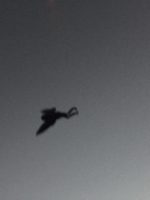 The 1975 book by John Keel, “The Mothman Prophecies,” is a complex book. The book’s through line centers on events in Point Pleasant, West Virginia from Nov. 15, 1966 to Dec. 15, 1967. These involved UFOs, sightings of a winged humanoid with glowing red eyes dubbed “The Mothman” and the collapse of the Silver Bridge, which spanned the Ohio River. But, the book is about so much more than that. It can be read several times and, depending on the reader’s perspective, be a completely different experience each time. It contains contactee stories, abductee stories, MiB encounters, Grinning Man encounters, a nighttime bedroom invader in a checkered jacket, strange metallic voices on the telephone, paranoia, poltergeists and prophecies. The reader can dive in repeatedly and come up with a tale that is interesting enough on its own to warrant further research. The tale involving Jaye P. Paro, Apol and Princess Moon Owl is one of those.
The 1975 book by John Keel, “The Mothman Prophecies,” is a complex book. The book’s through line centers on events in Point Pleasant, West Virginia from Nov. 15, 1966 to Dec. 15, 1967. These involved UFOs, sightings of a winged humanoid with glowing red eyes dubbed “The Mothman” and the collapse of the Silver Bridge, which spanned the Ohio River. But, the book is about so much more than that. It can be read several times and, depending on the reader’s perspective, be a completely different experience each time. It contains contactee stories, abductee stories, MiB encounters, Grinning Man encounters, a nighttime bedroom invader in a checkered jacket, strange metallic voices on the telephone, paranoia, poltergeists and prophecies. The reader can dive in repeatedly and come up with a tale that is interesting enough on its own to warrant further research. The tale involving Jaye P. Paro, Apol and Princess Moon Owl is one of those.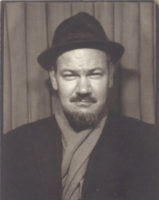 John Keel was a New York City resident and freelance writer who traveled the world looking for stories. During the period covered in “The Mothman Prophecies,” he was dividing his time, investigating strange events in both Point Pleasant and Long Island. The Long Island tale begins in the book with Keel’s investigation of reports of strange visitors by residents living on Mount Misery. Mount Misery is the highest point on Long Island at 400 ft and, put simply, is a big pile of gravel left behind by the last glacier that stopped by around 20,000 years ago. One resident there told of being visited by four men, three of whom looked “like Indians.” They politely told her that her land belonged to their tribe and they meant to reclaim it. She was “frightened” by their feet. They had no car and would have had to walk through mud to get to her house and yet they had none on their shoes. Keel was running into many similar stories of people who didn’t seem to quite fit in. He was becoming convinced that the people being described were extraterrestrials from another planet, or ultraterrestrials from another dimension.
John Keel was a New York City resident and freelance writer who traveled the world looking for stories. During the period covered in “The Mothman Prophecies,” he was dividing his time, investigating strange events in both Point Pleasant and Long Island. The Long Island tale begins in the book with Keel’s investigation of reports of strange visitors by residents living on Mount Misery. Mount Misery is the highest point on Long Island at 400 ft and, put simply, is a big pile of gravel left behind by the last glacier that stopped by around 20,000 years ago. One resident there told of being visited by four men, three of whom looked “like Indians.” They politely told her that her land belonged to their tribe and they meant to reclaim it. She was “frightened” by their feet. They had no car and would have had to walk through mud to get to her house and yet they had none on their shoes. Keel was running into many similar stories of people who didn’t seem to quite fit in. He was becoming convinced that the people being described were extraterrestrials from another planet, or ultraterrestrials from another dimension.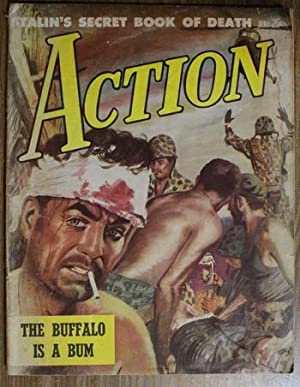 In the world of UFOlogy, some stories continue on, even after they’ve been convincingly debunked. This is often due to a particular story’s entertainment value and, it should be remembered, many UFO stories exist in an area between fiction and fact. If we were to assign this area a genera name, perhaps “true science fiction” might be appropriate. The idea that a fantastic story could be true, makes the story that much more interesting and suspension of disbelief is something everyone engages in when they want to be entertained. One such story, a biographical tale under the byline, Fred Reagan, appeared in the May 1953 issue of Action magazine. It could be held up as an example of what many paranormal enthusiasts call, “high strangeness.” However, it seems to be what folklorists call, “a tall tale.”
In the world of UFOlogy, some stories continue on, even after they’ve been convincingly debunked. This is often due to a particular story’s entertainment value and, it should be remembered, many UFO stories exist in an area between fiction and fact. If we were to assign this area a genera name, perhaps “true science fiction” might be appropriate. The idea that a fantastic story could be true, makes the story that much more interesting and suspension of disbelief is something everyone engages in when they want to be entertained. One such story, a biographical tale under the byline, Fred Reagan, appeared in the May 1953 issue of Action magazine. It could be held up as an example of what many paranormal enthusiasts call, “high strangeness.” However, it seems to be what folklorists call, “a tall tale.”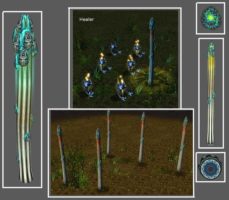 He found himself inside a dimly lit room surrounded by strange beings. They were around three feet tall and resembled “huge stalks of metallic asparagus.” He lost consciousness. When he came to, a metallic voice spoke to him through a speaker. Using broken English, the voice apologized for the collision, saying it had been an accident. It explained they were here to observe our primitive civilization and that their mission was peaceful. The voice further told him that they’d examined him and found a cancerous tumor, which they “adjusted.” He was instructed not to talk about the incident, as no one would believe him.
He found himself inside a dimly lit room surrounded by strange beings. They were around three feet tall and resembled “huge stalks of metallic asparagus.” He lost consciousness. When he came to, a metallic voice spoke to him through a speaker. Using broken English, the voice apologized for the collision, saying it had been an accident. It explained they were here to observe our primitive civilization and that their mission was peaceful. The voice further told him that they’d examined him and found a cancerous tumor, which they “adjusted.” He was instructed not to talk about the incident, as no one would believe him.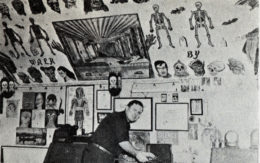 In the early years of the flying saucer mystery, the U.S. Air Force was the only organization doing any sort of significant investigation. Then, in 1952, a number of private groups were organized and the first citizen investigators went into the field and endeavored to solve the mystery for themselves. The first of these to rise to global attention was the International Flying Saucer Bureau, founded by Albert K. Bender. They put out a quarterly publication called Space Review, and were taken seriously by their fellow enthusiasts. They didn’t last long, however, as Bender put an end to his creation in 1953 after telling his followers he had solved the mystery. He later informed them he’d been visited by three men wearing black suits and homburg hats, who’d threatened him into keeping silent about his discovery. The mythos of the Men in Black entered flying saucer lore and the Bender Mystery became a subject that is still being debated today.
In the early years of the flying saucer mystery, the U.S. Air Force was the only organization doing any sort of significant investigation. Then, in 1952, a number of private groups were organized and the first citizen investigators went into the field and endeavored to solve the mystery for themselves. The first of these to rise to global attention was the International Flying Saucer Bureau, founded by Albert K. Bender. They put out a quarterly publication called Space Review, and were taken seriously by their fellow enthusiasts. They didn’t last long, however, as Bender put an end to his creation in 1953 after telling his followers he had solved the mystery. He later informed them he’d been visited by three men wearing black suits and homburg hats, who’d threatened him into keeping silent about his discovery. The mythos of the Men in Black entered flying saucer lore and the Bender Mystery became a subject that is still being debated today.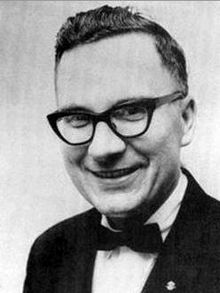 Albert K. Bender was born on July 16, 1921 in Duryea, Pennsylvania. What the “K” stood for seems to be part of the mystery. He served stateside as a dental technician in the U.S. Army Air Forces from June 8, 1942 to Oct. 7, 1943. He was stationed at Langley Field, Virginia. After his service, he moved to Bridgeport, Connecticut with his mother and stepfather. His mother died shortly thereafter.
Albert K. Bender was born on July 16, 1921 in Duryea, Pennsylvania. What the “K” stood for seems to be part of the mystery. He served stateside as a dental technician in the U.S. Army Air Forces from June 8, 1942 to Oct. 7, 1943. He was stationed at Langley Field, Virginia. After his service, he moved to Bridgeport, Connecticut with his mother and stepfather. His mother died shortly thereafter.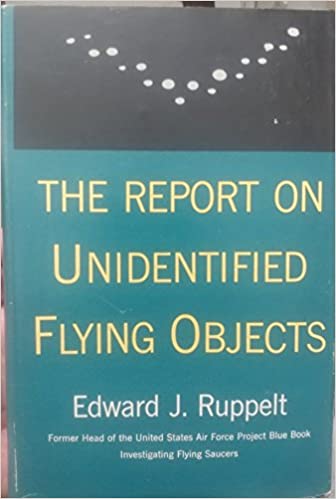 The 1956 book by Edward J. Ruppelt, “The Report on Unidentified Flying Objects” is a must-read for anyone interested in the subject. Capt. Ruppelt was the first director of Project Blue Book after leading a massive re-organization effort to revitalize the investigation while it was still operating as Project Grudge. He was the person who came up with the designation, Unidentified Flying Object, or UFO, which was pronounced “yoofo”, for what were popularly known as flying saucers. His book recounts his time with the project under both names and provides an insider’s view of what were then classified activities. There are two editions of the book with two different endings. The second edition was published in 1960 and Ruppelt included recent cases as a means to update the book. This edition has three more chapters tacked on that have a decidedly more negative tone than the original preceding chapters, where Ruppelt displays an open-minded view. This has led some to wonder if Ruppelt was pressured by the Air Force, which was then following the
The 1956 book by Edward J. Ruppelt, “The Report on Unidentified Flying Objects” is a must-read for anyone interested in the subject. Capt. Ruppelt was the first director of Project Blue Book after leading a massive re-organization effort to revitalize the investigation while it was still operating as Project Grudge. He was the person who came up with the designation, Unidentified Flying Object, or UFO, which was pronounced “yoofo”, for what were popularly known as flying saucers. His book recounts his time with the project under both names and provides an insider’s view of what were then classified activities. There are two editions of the book with two different endings. The second edition was published in 1960 and Ruppelt included recent cases as a means to update the book. This edition has three more chapters tacked on that have a decidedly more negative tone than the original preceding chapters, where Ruppelt displays an open-minded view. This has led some to wonder if Ruppelt was pressured by the Air Force, which was then following the